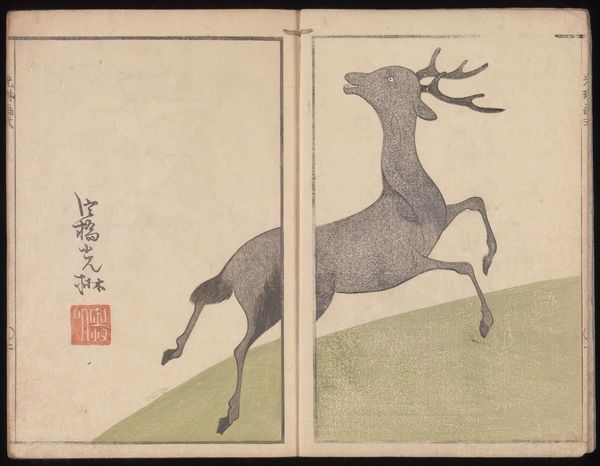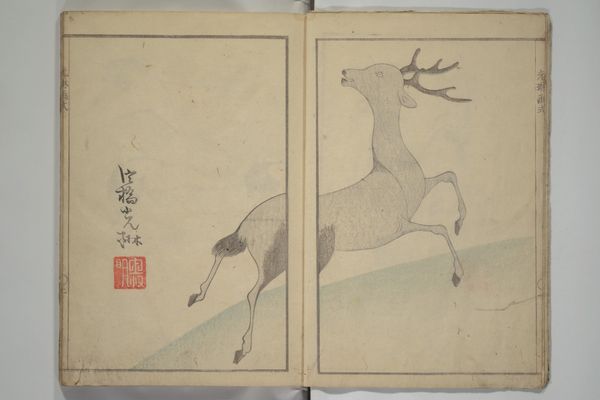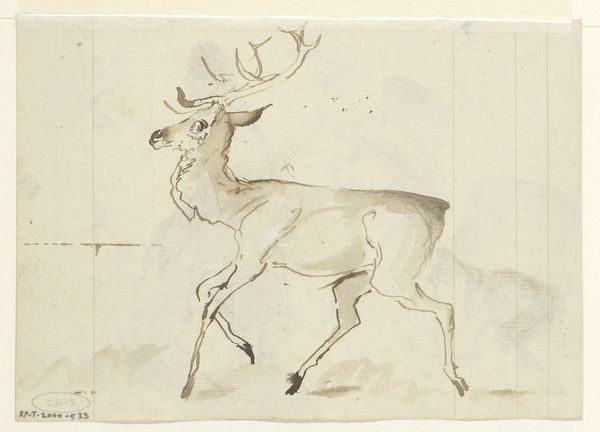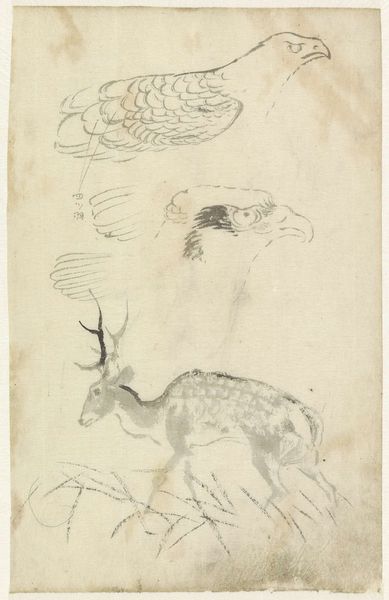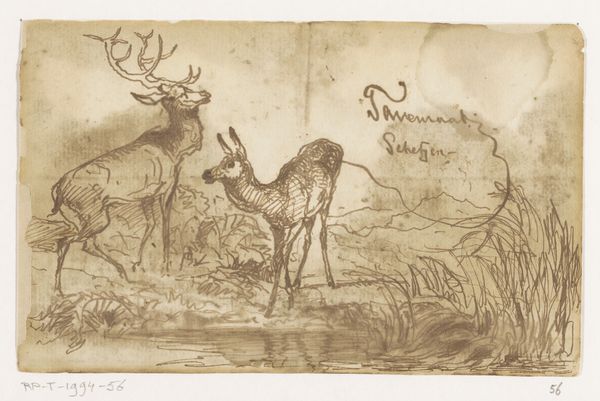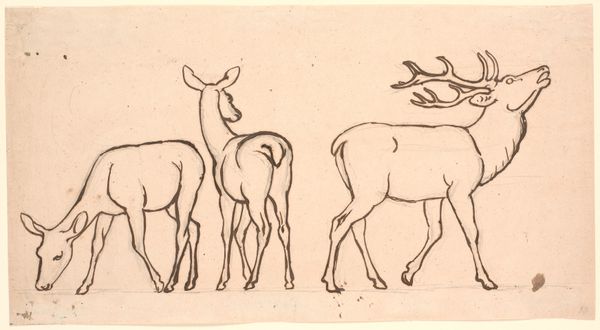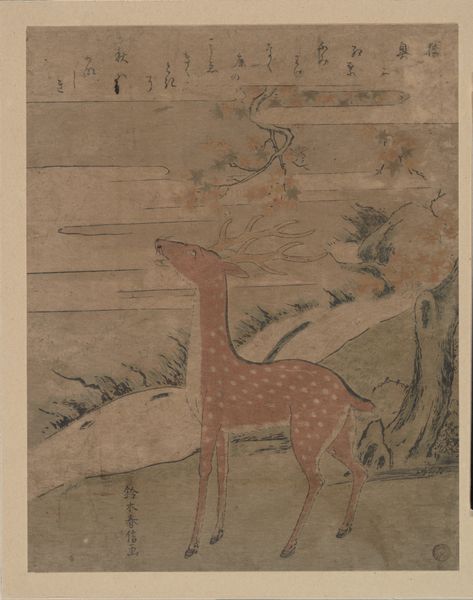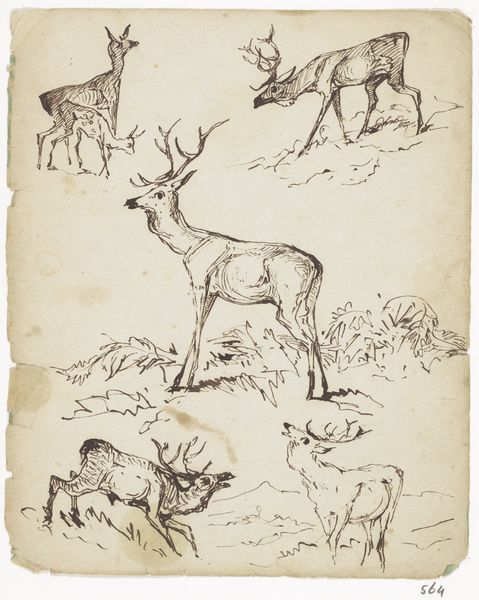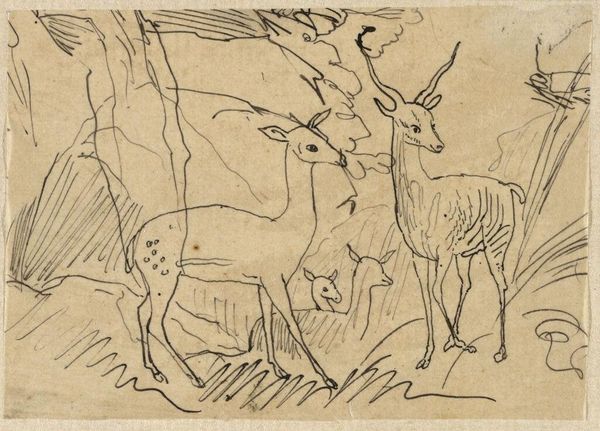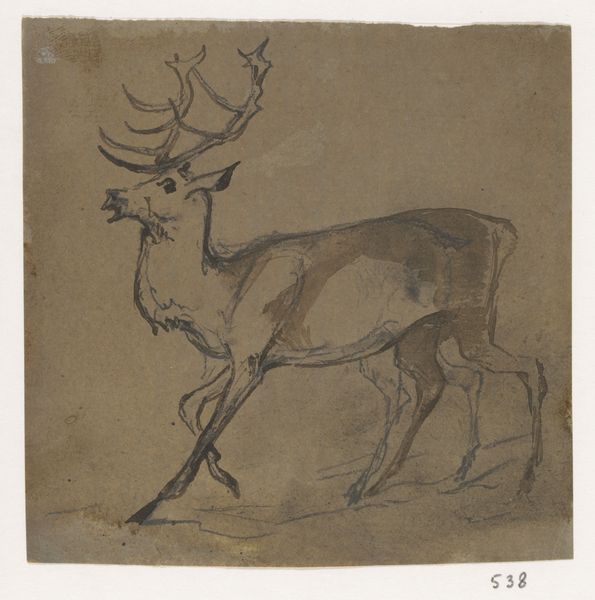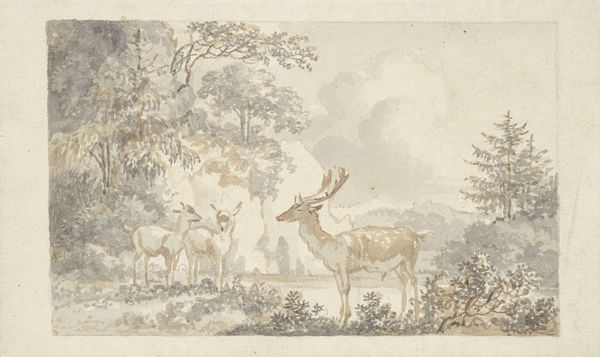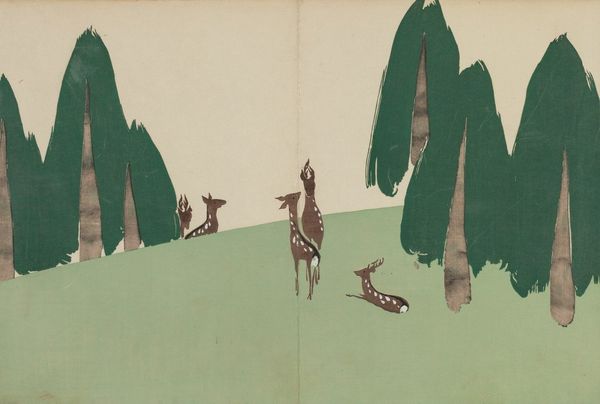
drawing, ink
#
drawing
#
animal
#
asian-art
#
landscape
#
figuration
#
ink
Dimensions: height 256 mm, width 368 mm
Copyright: Rijks Museum: Open Domain
Curator: Welcome! We’re looking at “Vier herten,” or “Four Deer,” an ink drawing completed around 1826 by Nakamura Hōchū. What strikes you initially? Editor: A sort of…spare grace. It’s simple but there is an almost ethereal quality in the composition and minimal palette, perhaps owing to the materiality of the ink. The animals seem weightless on the page, with a hint of ghostly detachment, somehow. Curator: I agree, ethereal is a great descriptor. I’m drawn to the economical use of line—such deliberate, confident strokes to suggest form and movement. It really lets the blank space of the paper participate. Thinking materially about the surface, can the kind of paper also contribute to the ethereal effect you noted? Editor: Precisely. Consider the way Japanese art elevates paper production—using kozo fibers, creating a surface for the ink to almost float upon. You immediately see it resists an idea of the "preciousness" surrounding more traditionally celebrated drawings, like chalk on paper that are then meticulously framed behind glass. There’s an element of disposability inherent here. The woodblock tradition it emerges from is interesting here as well—thinking about who may have commissioned something such as this, the value attached and how it then circulates. Curator: That contrast is potent – this "disposability" holding such elegance and care. In terms of context, Hōchū, while working within a traditional idiom, was very interested in importing elements of Western art making – in a way challenging or evolving those established printmaking expectations. Do you get a sense of that looking at it? Editor: The Western gaze may come out here in the depiction of nature. However, its manifestation as an ink drawing is a kind of material negotiation—between what counts as "high" art (a framed oil painting) and folk material (ink, paper, animal depiction) consumed as popular entertainment. Curator: Exactly. That liminal space he inhabits is so compelling here – challenging assumptions on both sides. Looking closer – it’s beautiful how Hōchū implies a relationship between the deer without resorting to a detailed narrative. There is something fundamentally "open" in this image. Editor: The sketchiness creates that sense. What could be interpreted as imperfection becomes the crucial factor here – an engagement with production processes and market forces gives a powerful depth that goes beyond stylistic interpretation. Curator: Beautifully said, our time's up, but I'm glad we had the opportunity to spend a moment immersed in the world Hōchū imagined. Editor: Yes, material culture illuminates those seemingly fragile things we encounter in the visual realm. Thank you.
Comments
No comments
Be the first to comment and join the conversation on the ultimate creative platform.
